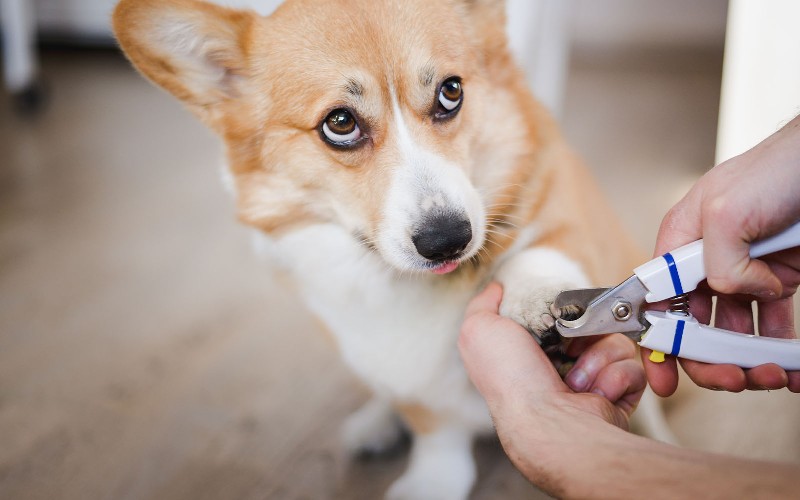
The ultimate guide - How and when to trim your dog's nails
As a loving pet parent, you want to ensure every aspect of your dog's health is well-maintained, and nail care is no exception. Properly trimmed nails are crucial for your dog's comfort and health. This guide will help you understand the importance of nail trimming, how to do it safely, and the best times to trim your dog's nails!Why is nail trimming important?
- Preventing discomfort and pain: Overgrown nails can cause significant pain and discomfort. They can curl and dig into the paw pads, leading to infections and other serious health issues.
- Avoiding injury: Long nails can easily get caught in carpets, furniture, or other objects, which can result in painful injuries. They also affect your dog's gait, potentially causing joint and bone problems over time.
- Promoting good hygiene: Keeping nails short reduces the risk of dirt and bacteria accumulating under the nails, which helps in maintaining good hygiene and preventing infections.
- Audible cues: If you can hear your dog's nails clicking on hard surfaces as they walk, it's a clear sign that their nails are too long and need trimming.
- Visual inspection: Regularly check your dog's nails. If they extend beyond the paw pads, it's time for a trim.
- Regular schedule: Most dogs need their nails trimmed every 3-4 weeks. However, this can vary depending on your dog's activity level and the types of surfaces they walk on.
- Dog nail clippers: Choose clippers that are suitable for your dog’s size. Options include guillotine-style clippers, scissor-style clippers, and grinder tools.
- Styptic powder: This is essential for stopping any bleeding in case you accidentally cut the nail too short.
- Treats: Have some treats on hand to reward your dog and keep them calm during the process.
- Create a calm environment: Find a quiet, comfortable space where your dog feels safe and relaxed. It may be helpful to have another person gently hold your dog.
- Inspect the nails: Identify the quick (the blood vessel inside the nail). For dogs with light-colored nails, the quick is easier to see as a pinkish area. For dogs with dark nails, trim small amounts gradually to avoid cutting into the quick. Pay attention when trimming, as a severed nail vein is a direct gateway for potential pathogens to enter the bloodstream, which can lead to infections.
- Start trimming: Hold the paw firmly but gently. Using the clippers, trim the nail at a slight angle, avoiding the quick. If you are unsure, it’s better to cut off a small amount at a time.
- Stay calm and patient: If your dog becomes anxious, take a break and try again later. Reward them with treats and praise to make the experience positive.
- Use styptic powder if needed: If you accidentally cut the quick, apply styptic powder to stop the bleeding. Stay calm to avoid alarming your dog.
- Regular handling: Get your dog used to having their paws handled from a young age. This will make nail trimming less stressful for them.
- Positive reinforcement: Always reward your dog with treats and praise during and after nail trimming sessions.
- Frequent checks: Regularly check your dog's nails and trim them as needed to prevent them from getting too long.
If you’re uncomfortable trimming your dog’s nails or if your dog is highly anxious or aggressive during nail trims, consider seeking help from a professional groomer or veterinarian. They have the expertise and tools to handle the situation safely and effectively!
Conclusion
Maintaining your dog’s nail health is a crucial part of their overall care. By understanding the importance of nail trimming, knowing when and how to do it, and using the right tools and techniques, you can ensure your furry friend's comfort and well-being. Regular nail trims, combined with positive reinforcement, will make the process smoother for both you and your dog. Remember, a well-groomed dog is a happy and healthy dog.

